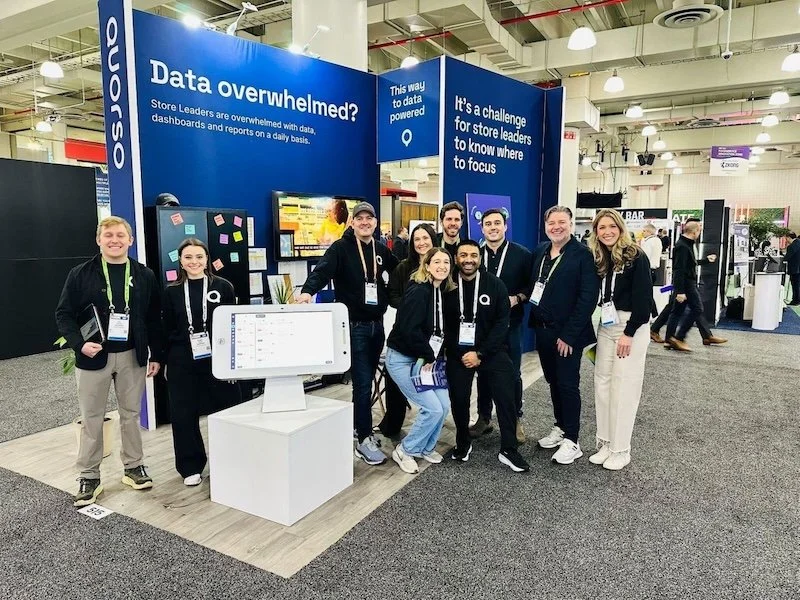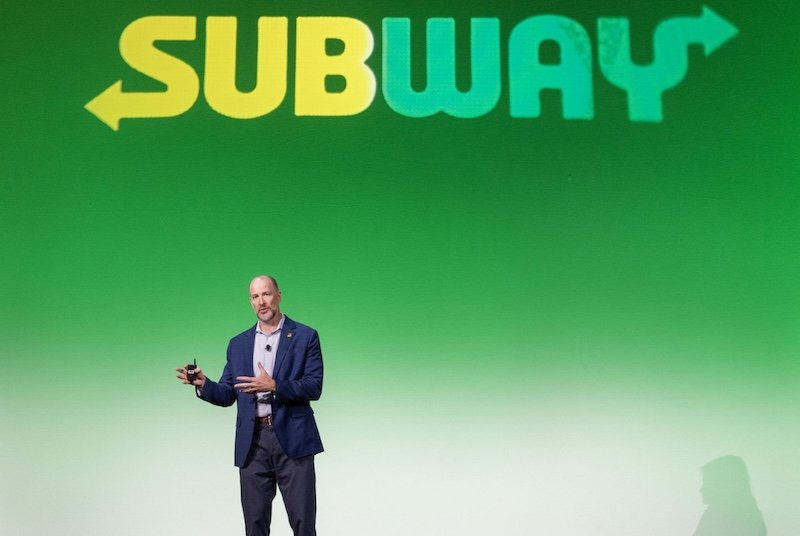The seven deadly causes of ageing - and how Aubrey de Grey plans to eliminate them
Death has seven signatures. Seven distinct ways that time writes its inevitable verdict on every human body. But what if those signatures could be erased faster than they're written?
Dr. Aubrey de Grey, the Cambridge trained biogerontologist who refuses to accept aging as inevitable, has spent decades mapping these seven pathways to biological decay. His Strategies for Engineered Negligible Senescence (SENS) framework doesn't just identify how we age—it provides a systematic battle plan to eliminate each cause entirely.
"Damage repair does not interfere with metabolism," de Grey explains, describing why his approach succeeds where others fail. "The damage is inert, it's harmless until it accumulates. Which means that if you target that, you're not really interfering with the body's normal operation at all."
Think of it as the difference between preventing a car from rusting versus fixing the rust after it appears. De Grey's engineering approach targets the rust—the accumulated damage—rather than trying to redesign the entire engine.
Photo credit: Unsplash.
1. The Disappearing Act: Cell Loss and Tissue Atrophy
The Problem: Your body is constantly losing cells—neurons die, muscle fibers disappear, organs shrink. Unlike a lizard regrowing its tail, most human tissues can't replace what's lost fast enough.
De Grey's Solution: RepleniSENS treats the human body like a depleted army that needs reinforcements. Stem cell therapy becomes the cavalry, rushing in to replace fallen soldiers. Growth factors act as recruitment officers, convincing existing cells to multiply and fill the gaps.
Current Progress: This category is arguably the most advanced. Stem cell transplants already save lives in blood cancers, and clinical trials are testing mesenchymal stem cell infusions for age related frailty. Longeveron's Lomecel-B cells showed improvements in walking distance and inflammatory markers in elderly patients—not a cure, but proof that cellular reinforcements can work.
The thymus regeneration trials represent the holy grail of this approach: actually regrowing a critical organ that normally disappears with age. Early results suggest it's possible to turn back the clock on immune aging.
2. The Zombie Apocalypse: Death-Resistant Senescent Cells
The Problem: Some cells reach their expiration date but refuse to die. These "zombie cells" stop working but hang around, poisoning their neighbours with inflammatory toxins—what scientists call the senescence-associated secretory phenotype (SASP).
De Grey's Solution: ApoptoSENS deploys molecular assassins called senolytic drugs. These compounds can distinguish between healthy cells and senescent zombies, selectively eliminating the troublemakers while leaving good cells untouched.
Current Progress: The senolytic revolution is already underway. Unity Biotechnology's trials showed that clearing senescent cells from mouse tissues extended lifespan by 25%. In humans, the drug combination dasatinib plus quercetin has shown promise in early trials for diabetic kidney disease and idiopathic pulmonary fibrosis.
Unity's pivot to eye diseases makes strategic sense—the eye is easier to target, and restoring vision provides clear proof of concept. Their Phase II trial results for diabetic macular edema could validate the entire senolytic approach in humans.
3. The Rust That Never Stops: Extracellular Protein Cross-Linking
The Problem: Long-lived proteins in your skin, arteries, and joints develop molecular "rust"—sugar-derived cross-links that make tissues stiff and brittle. This is why old skin wrinkles, arteries harden, and joints creak.
De Grey's Solution: GlycoSENS borrows from nature's ultimate recyclers: soil bacteria. These microscopic organisms have evolved enzymes that can break down compounds our bodies can't handle, including the notorious glucosepane cross-links that accumulate in human tissues.
Current Progress: This was once considered impossible because glucosepane was too rare to study. Through philanthropic funding, SENS researchers synthesised enough glucosepane to identify bacterial enzymes that can cleave it. Revel Pharmaceuticals now has a "lead candidate" enzyme and plans to test it on old human tissues.
If successful, cross-link breakers could literally make old arteries young again—restoring the flexibility that keeps blood pressure low and circulation strong.
4. The Alzheimer's Culprit: Extracellular Aggregates
The Problem: Certain proteins clump together outside cells, forming toxic aggregates like the beta-amyloid plaques in Alzheimer's disease or the transthyretin deposits that stiffen aging hearts.
De Grey's Solution: AmyloSENS treats these protein clumps like foreign invaders. Immunotherapy trains the immune system to recognize and devour the aggregates, while monoclonal antibodies provide targeted strikes against specific protein clusters.
Current Progress: This category has seen the most clinical success. Monoclonal antibodies like lecanemab now clear beta-amyloid plaques from Alzheimer's patients' brains. The drug tafamidis dramatically slows transthyretin amyloid cardiomyopathy, proving that clearing protein aggregates can treat age-related diseases.
SENS-funded research identified enzymes that can degrade A2E, the toxic compound that builds up in aging eyes and contributes to macular degeneration. Ichor Therapeutics is developing this into a potential treatment called "LysoClear."
5. The Cellular Garbage Crisis: Intracellular Junk
The Problem: Cells accumulate molecular garbage they can't digest—oxidised cholesterol, lipofuscin, and other toxic debris that clogs cellular machinery like sludge in an engine.
De Grey's Solution: LysoSENS equips cells with better garbage disposal systems. By introducing new enzymes from bacteria, we can break down the accumulated waste that normally builds up over decades.
Current Progress: Some of SENS's first funded projects proved this concept by finding bacterial enzymes that digest lipofuscin and other age related waste. Underdog Pharmaceuticals is developing a cyclodextrin therapy to remove 7-ketocholesterol—a particularly nasty form of oxidized cholesterol—from arterial plaque.
The approach builds on existing knowledge of lysosomal storage diseases, where missing enzymes cause cellular waste to accumulate. The same enzyme replacement strategies could work for aging.
6. The Power Plant Meltdown: Mitochondrial Mutations
The Problem: Your cellular power plants—mitochondria—have their own DNA that mutates faster than nuclear DNA. When these mutations accumulate, cells lose energy and start producing harmful reactive oxygen species.
De Grey's Solution: MitoSENS uses an elegant workaround: move the critical mitochondrial genes into the cell nucleus, where they're better protected. It's like relocating your most important files from a failing hard drive to a secure server.
Current Progress: Researchers have successfully moved some mitochondrial genes into the nucleus in cell and animal models. A French group funded by SENS demonstrated this for the ND4 gene, leading to the founding of Gensight Biologics. Their gene therapy for a mitochondrial eye disease is now in Phase III trials—indirect validation that the approach works.
While not yet applied to general aging, these advances suggest that protecting cells from mitochondrial mutations is feasible.
7. The Cancer Conundrum: Nuclear DNA Mutations
The Problem: This is the big one—the category de Grey calls "really hard." Most nuclear DNA mutations are harmless, but some drive cancer, the ultimate age-related killer.
De Grey's Solution: OncoSENS takes a radical approach: make it impossible for cells to become immortal by deleting telomerase genes and periodically replacing stem cells. Without the ability to maintain telomeres, cancer cells would hit the Hayflick limit and die.
Current Progress: This remains highly experimental. The strategy requires solving two problems simultaneously: preventing cancer while maintaining tissue regeneration. Current cancer immunotherapy advances provide hope, but a comprehensive solution to age-related cancer is still years away.
De Grey often calls this category the most challenging because "if we underestimate cancer when we are fixing all other kinds of aging damage, the other fixes won't be of much benefit because we will still be dying of cancer."
The Combination Revolution
Here's the crucial insight: these seven causes don't act in isolation. They're interconnected, which means fixing just one won't deliver longevity escape velocity. The magic happens when you target multiple categories simultaneously.
The LEV Foundation's mouse studies proved this concept. Single therapies added months to lifespan, but combining four different approaches—targeting senescent cells, telomeres, immune aging, and cellular metabolism—showed clear synergistic effects.
"We want them to be as different as possible from each other," de Grey explains about selecting combination therapies. "We definitely don't want a duplication of effort here, we want to try and find things that are likely to synergize."
The Engineering Mindset
What makes de Grey's approach revolutionary isn't just the science—it's the mindset. Traditional gerontology treats aging as a natural process to be slowed. De Grey treats it as an engineering problem to be solved.
"The rules of evaluating evidence that work best for testing scientific hypotheses work very badly for engineering," he notes. "Medicine is more like engineering than like experimental science. If engineers worked by the rules of experimental scientists, we'd still be trying to fly by flapping."
This engineering approach has moved from fringe to mainstream. The "Hallmarks of Aging" framework—now widely accepted in academia—overlaps considerably with SENS, validating de Grey's systematic approach to aging damage.
The Race Against Time
Each of these seven battlefronts is advancing at different speeds. Senolytic drugs are already in human trials. Cross-link breakers are in preclinical development. Mitochondrial gene therapy has shown proof of concept. Stem cell therapies are becoming routine.
The question isn't whether each approach will work—it's whether they'll be ready in time to help current generations. De Grey's 50% prediction for longevity escape velocity within 12-15 years assumes that progress on multiple fronts will converge into a comprehensive solution.
"They've all made progress," de Grey notes, "but there's still a spectrum. The ones that used to be the hardest are pretty much still the hardest."
The seven deadly causes of aging have held humanity hostage for millennia. But for the first time in history, we have detailed battle plans for each one. The war against aging isn't just beginning—it's already being won, one cellular repair at a time.
The only question is whether we'll claim victory in time to benefit those alive today. In de Grey's systematic approach, that answer depends on how quickly we can turn seven separate scientific advances into one comprehensive solution to humanity's oldest enemy.































Continue reading…